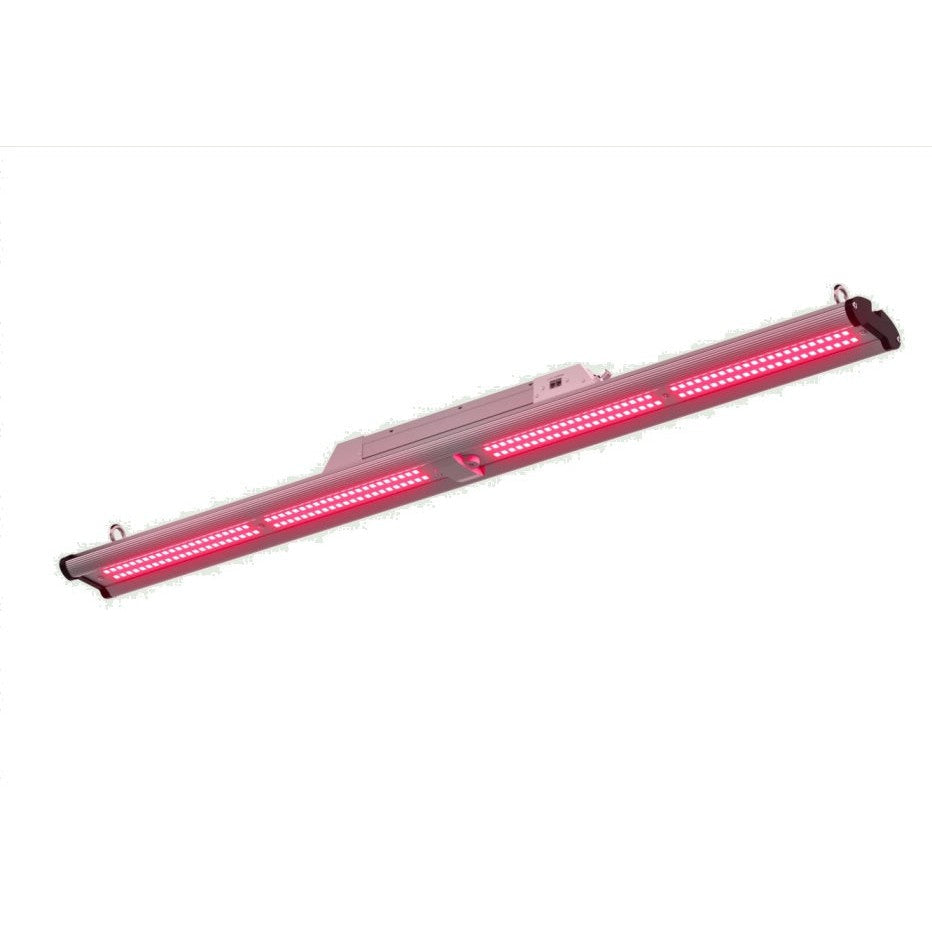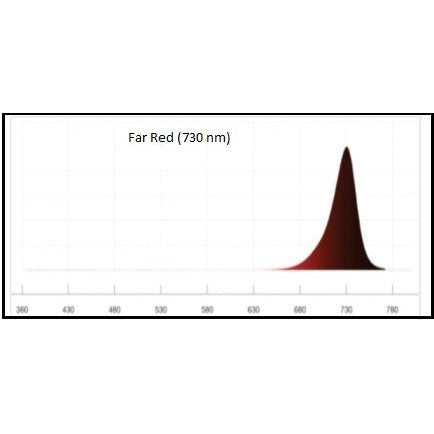Description
Nanashi Evolutio Far Red (730 nm) LED Grow Light Bars
Nanashi Evolutio Far Red (730 nm) LED Bars offer growers the opportunity to enhance plant quality and harvest yield by adjusting light spectrum Red: Far Red balance.
Plants use photoreceptors, like phytochrome, to sense signals from their environment, like light, which affects their growth. Phytochrome switches between an inactive state (when absorbing red light) and an active state (when absorbing far-red light). The ratio of red light to far-red light is used to quantify these light conditions (abbreviated as “R:FR”). The specific ratios needed to activate phytochrome vary due to species, growing conditions, and light intensity, but far-red light is known to influence seed germination, stem elongation, and flowering time.
Far-Red Light and Seed Germination: Seeds require sufficient light to germinate in optimal conditions. When exposed to excessive far-red radiation, seeds may be prevented from germinating due to the shade-like environment created. This can be determined by evaluating the R:FR (ratio of red to far-red wavelengths) ratio, which should remain 1.1 or higher. Lowering the R:FR to 0.6 has been shown to reduce the germination rate by approximately 30%. To avoid this, seeds should be exposed to bright lights rich in red light and low in far-red light.
Far-Red Light and Vegetative Growth: The R:FR also impacts vegetative growth in plants. High amounts of far-red light can cause stems to elongate and leaves to get longer and wider. This is because the plant is trying to stretch up in hopes of reaching more sunlight. As a result, a plant can look “stretched out” and these long skinny stems are sometimes too weak to hold up heavy flowers and fruit. High amounts of far-red light can also decrease the amount of chlorophyll, anthocyanins, and antioxidants in the plant. Chlorophylls and anthocyanins are pigments that make a plant colorful, which can factor into the novelty and value of the harvest. Antioxidants protect against harmful free radicals – both for the plant and the humans consuming it! Ideally, a grower wants a plant with vibrant color and high antioxidant levels. To produce plants with strong stems and a vibrant color, they should be given high amounts of red light and low amounts of far-red light. This is especially true if the plants are being grown at high-density.
Far-Red Light and Flowering: Far-red light can be used to prompt a plant to activate stress-relief responses, such as delayed germination and stem elongation, in an effort to seek higher light levels. As a defense mechanism, the plant may enter the reproduction/flowering state earlier or faster. Many varieties of edible and ornamental plants, including tomato, potato, cucumber, beans, wheat, mustard, etc., experience accelerated flowering with higher levels of far-red illumination, and sometimes even increased flower formation.


